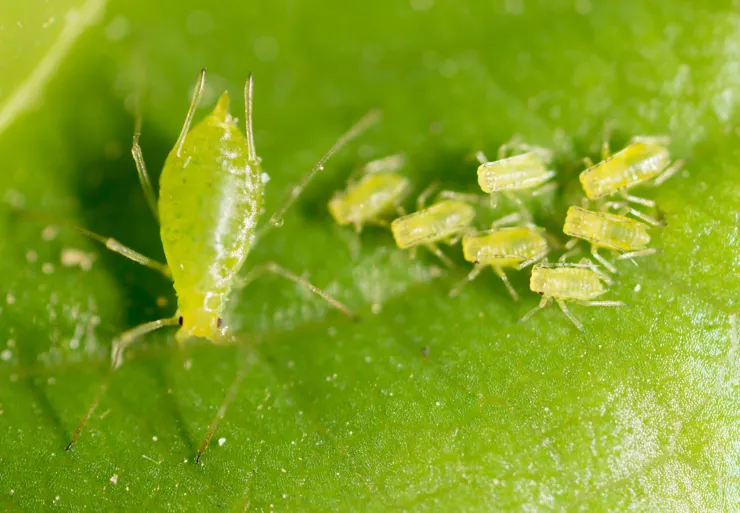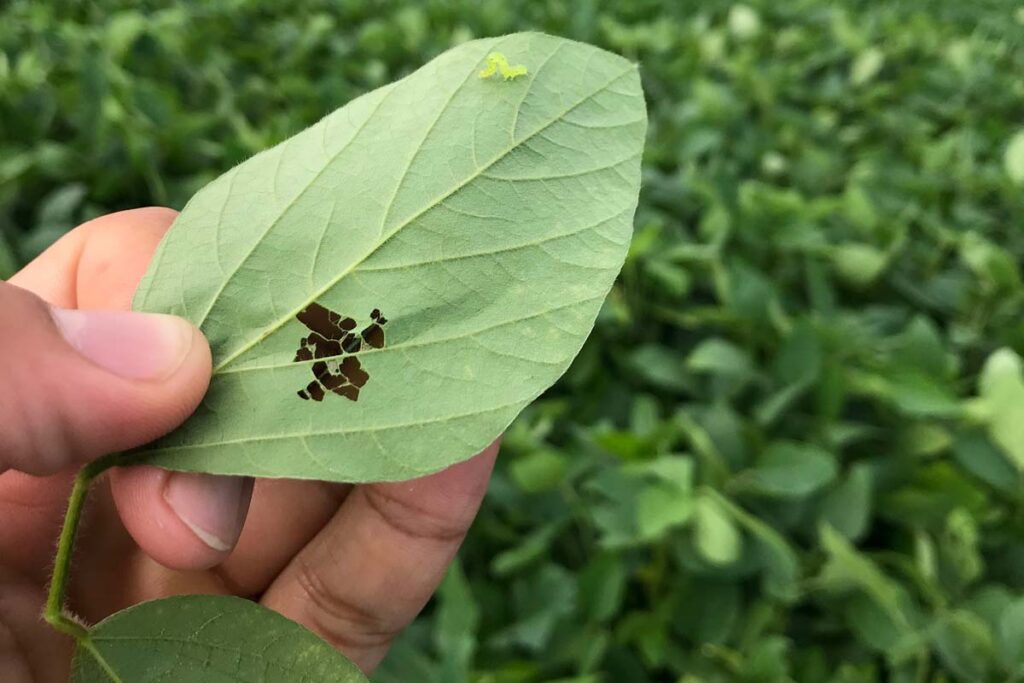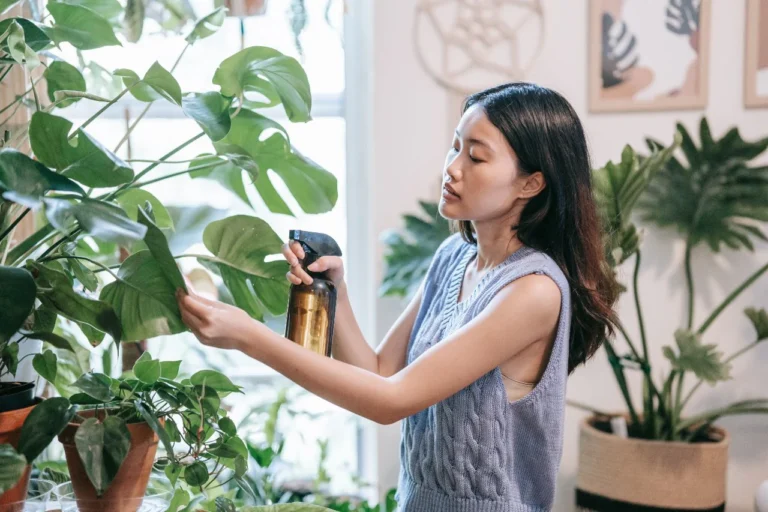Contents
Introduction
If you’re a proud indoor plant owner, you know how important it is to keep your green friends healthy and happy. But sometimes, those pesky little bugs show up uninvited, making your plants their new home. We’re talking about indoor plant pests like aphids, spider mites, and whiteflies. Not only do they make your plants look shabby, but they can also cause serious damage if left unchecked.
Now, you might be tempted to reach for chemical pesticides, but there’s a better, safer way to handle these unwanted guests: natural remedies. Why go natural? Well, natural remedies are kinder to both your plants and the environment. They help you avoid the harsh chemicals that can be harmful to your indoor air quality and your family’s health. Plus, they’re often more affordable and easier to get your hands on.
In this guide, we’ll walk you through everything you need to know about keeping those plant pests at bay using natural methods. From identifying the little critters causing the trouble to using remedies you might already have in your kitchen, we’ve got you covered. By the end, you’ll be armed with the knowledge to tackle indoor plant pests effectively and safely. Let’s dive in and give your plants the protection they deserve!
Identifying Indoor Plant Pests
Before you can deal with indoor plant pests, you need to know who you’re up against. Identifying these tiny invaders is the first step to getting rid of them. Here’s a quick guide to the most common culprits and what to look for.

Aphids are small, soft-bodied insects that come in various colors, including green, black, and white. They love to munch on plant sap, which can cause your plant’s leaves to curl and yellow. You might notice a sticky residue on your plant or around the pot—aphids produce a substance called honeydew, which can also attract other pests.
Spider Mites are even tinier and harder to spot. They’re known for creating fine webs on the undersides of leaves. These webs are their calling card, and they often cause tiny yellow or brown spots on the leaves as they feed. If you look closely, you might see these critters scuttling around on the webs.
Whiteflies are another sneaky pest. They look like tiny white moths and tend to hover around the plant, especially when you disturb it. Whiteflies are notorious for causing sticky residue and sooty mold on the leaves, which can make your plant look dirty and unhealthy.
Scale Insects are small, round, and usually covered with a hard, shell-like coating. They attach themselves to plant stems and leaves, feeding on sap and causing yellowing and leaf drop. Their presence can often be spotted by the small, dark bumps on the plant.
Mealybugs look like tiny cotton balls or white fuzz and often hide in the joints and crevices of plants. They also feed on plant sap, leading to yellowed leaves and stunted growth. Their sticky honeydew can attract ants and other pests.
To keep your plants in top shape, it’s crucial to recognize these pests early. Look for changes in your plant’s appearance, like discolored or spotted leaves, sticky residues, or webs. The sooner you identify the problem, the easier it will be to tackle it with natural remedies. With a bit of vigilance and the right approach, you’ll keep your plants happy and pest-free!
Preventative Measures
The best way to deal with indoor plant pests is to prevent them from showing up in the first place. Think of it as a way to keep your plants in tip-top shape so they’re less appealing to those pesky critters. Here’s how you can stay one step ahead and create an environment where pests are less likely to thrive.

Maintaining Plant Health is your first line of defense. Healthy plants are naturally better at resisting pests. Start with proper watering techniques—avoid overwatering, which can lead to root rot and create a breeding ground for pests. Make sure your plants have good drainage, and let the topsoil dry out between waterings to keep things balanced.
Ensuring adequate light and ventilation is also crucial. Most indoor plants need bright, indirect light to grow well. Good airflow around your plants helps prevent the buildup of humidity and reduces the risk of fungal issues and pest infestations. You might consider using a small fan to keep the air moving around your plants, especially if they’re in a closed room.
Regular plant inspections are another essential practice. Take a few minutes each week to check the undersides of leaves, stems, and soil for any signs of pests or disease. Catching issues early can prevent a small problem from turning into a full-blown infestation.
Creating a Pest-Resistant Environment can also be highly effective. One way to do this is by choosing pest-resistant plant varieties. Some plants are naturally less attractive to pests, which can make your life easier. If you’re picking out new plants, look for those that are known for their resilience.
Another handy tip is to use beneficial insects like ladybugs and lacewings. These tiny helpers are natural predators of common pests and can help keep your indoor garden in check. They’re like having a little army of pest-fighting agents right in your home. Just make sure you provide a suitable environment for them to thrive, and they’ll do the hard work for you.
By following these preventative measures, you’ll create an environment where your plants can flourish and pests are less likely to take hold. It’s all about staying proactive and keeping your indoor garden as healthy and happy as possible!
Natural Remedies for Indoor Plant Pests
When those unwelcome plant pests make an appearance, natural remedies are a great way to tackle the problem without resorting to harsh chemicals. Here’s a rundown of effective and easy-to-use natural solutions that can help you keep your indoor plants pest-free.
Neem Oil is a powerhouse when it comes to natural pest control. It acts as an insecticide, fungicide, and miticide all in one. Neem oil works by interfering with pests’ life cycles, making it harder for them to reproduce. You can apply it by mixing it with water and spraying it directly onto your plants. It’s safe for most plants and won’t harm your indoor air quality, but be sure to follow the instructions on the label for the best results.
Insecticidal Soap is another excellent option. It’s made from natural plant oils and fats and works by breaking down the protective outer layer of pests like aphids and spider mites. This causes them to dry out and die. You can use it by spraying it directly onto the affected areas of your plants. It’s gentle enough for most plants and can be used regularly to keep pests at bay.
Essential Oils can also be a powerful tool against pests. Here’s how two popular ones can help:
- Peppermint Oil: This oil is known for its strong scent, which repels many common pests. To use it, mix a few drops with water and spray it on your plants. Not only will it help drive away pests, but it also leaves a refreshing smell.
- Eucalyptus Oil: Eucalyptus has natural antimicrobial properties that can deter pests and keep your plants healthier. Like peppermint oil, mix a few drops with water and spray it on your plants.
Diatomaceous Earth is a natural, non-toxic powder made from fossilized algae. It works by dehydrating insects that come into contact with it. Sprinkle it on the soil and around your plants to create a barrier that pests can’t cross. It’s safe for pets and people, but be sure to use it in a well-ventilated area to avoid inhaling the fine dust.
Homemade Solutions are another way to handle pests using ingredients you probably already have at home:
- Garlic Spray: Garlic is a natural pest repellent. Blend a few cloves of garlic with water, strain the mixture, and spray it on your plants. The strong odor will deter many insects.
- Hot Pepper Spray: Hot peppers can irritate pests and keep them away. Blend some hot peppers with water, strain it, and spray it on your plants. Be cautious with this one—hot pepper spray can be quite potent, so avoid getting it in your eyes or on your skin.
Beneficial Insects are like your personal pest control team. Ladybugs, for instance, are great at munching on aphids and other small pests. Lacewings are another beneficial insect that feeds on a variety of soft-bodied insects. You can purchase these helpful bugs and introduce them to your indoor garden. Just make sure to provide a suitable environment for them to thrive in.
Using these natural remedies can help you manage indoor plant pests effectively while keeping your home environment safe and healthy. With a bit of care and regular maintenance, you can enjoy a thriving, pest-free indoor garden!
Integrated Pest Management (IPM)
When it comes to keeping your indoor plants free from pests, taking a well-rounded approach can be highly effective. This is where Integrated Pest Management (IPM) comes into play. IPM is all about combining different strategies to keep pests under control in a way that’s both efficient and eco-friendly. Here’s how you can put IPM into practice for your indoor garden.

Combining Natural Remedies is key to IPM. Instead of relying on just one method, using a mix of natural remedies can tackle various pests more effectively. For example, you might use neem oil to deal with aphids, while diatomaceous earth can help with spider mites. By combining treatments, you address different types of pests and reduce the chances of them becoming resistant to any one remedy.
Monitoring and Adjusting Treatment Methods is also crucial. Regularly check your plants for signs of pests and evaluate how well your treatments are working. If you notice that one method isn’t as effective as it used to be, it’s time to try a different approach or adjust your strategy. Keeping a pest diary can help you track what works best and when to apply it.
Long-Term Strategies are essential for maintaining a healthy indoor garden. One important strategy is regular plant maintenance and monitoring. Make it a habit to inspect your plants weekly for any early signs of pests or disease. This proactive approach helps catch problems before they become major issues.
Educating yourself on pest prevention and control is another important aspect of IPM. The more you know about how pests operate and what attracts them, the better you can prevent infestations. Learn about the life cycles of common pests and the conditions they thrive in, so you can make your home less inviting to them.
Adjusting Your Approach as Needed is also part of a successful IPM plan. As seasons change and plants grow, the types of pests you encounter might change as well. Stay flexible with your pest control methods and be ready to switch tactics if necessary.
By combining these strategies, you create a balanced approach that minimizes the impact on your plants, the environment, and your health. Integrated Pest Management isn’t just about fighting pests; it’s about creating a healthy and thriving indoor garden that’s resilient against pests in the long run. With a bit of effort and ongoing attention, you’ll keep your indoor plants happy and healthy, free from the hassle of pests!
Conclusion
So there you have it! Keeping indoor plant pests at bay doesn’t have to be a daunting task. By understanding the common pests and their signs, you can take proactive steps to prevent infestations and address issues with natural remedies.
Recap of Key Points: We’ve covered a lot of ground, from identifying pests like aphids and spider mites to using natural solutions such as neem oil and essential oils. You’ve learned how maintaining plant health and using beneficial insects can create a less inviting environment for pests. Integrated Pest Management (IPM) ties it all together by combining different strategies to keep your indoor garden thriving.
Encouragement to Use Natural Remedies: Natural remedies are not only effective but also safer for you, your plants, and the environment. They offer a gentle way to tackle pests while avoiding the harsh chemicals often found in conventional pesticides. Embracing these natural solutions means you can enjoy a beautiful, healthy indoor garden without compromising on safety.
Additional Resources: For those looking to dive deeper, there are plenty of resources available to help you expand your knowledge. Consider exploring more detailed guides on natural pest control, checking out DIY recipes for homemade remedies, or visiting websites dedicated to indoor gardening. These resources can provide further insights and tips to enhance your pest management efforts.
With these tools and strategies in your gardening arsenal, you’re well-equipped to keep your indoor plants healthy and pest-free. Enjoy the peace of mind that comes from knowing you’re taking a thoughtful, eco-friendly approach to plant care. Happy gardening!



